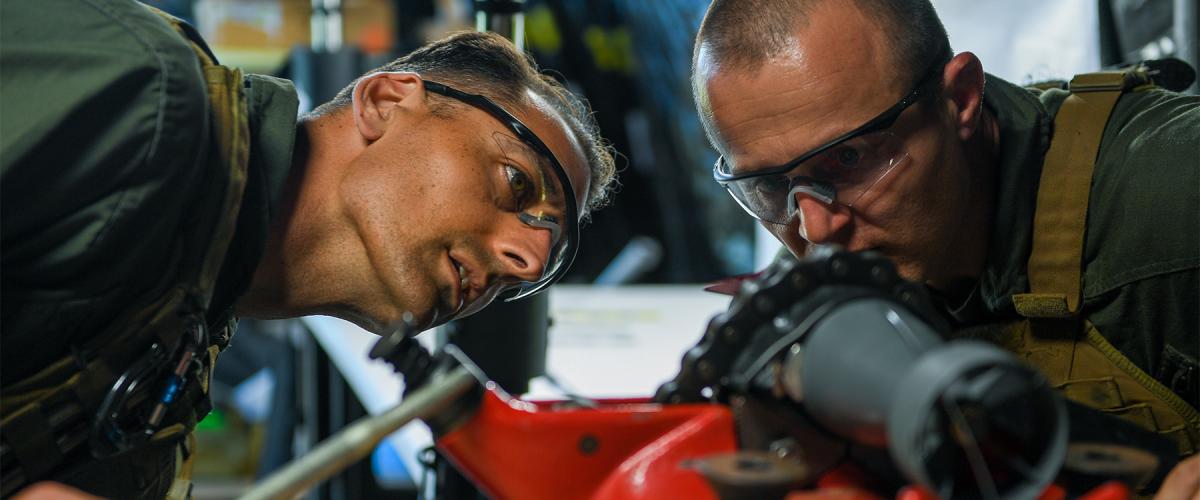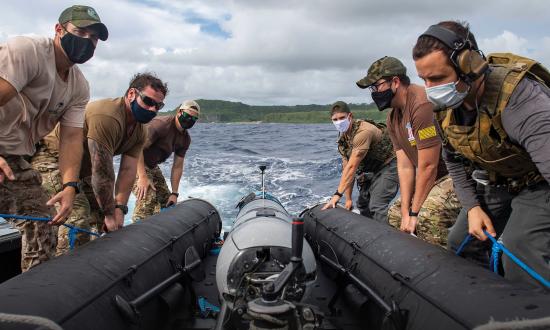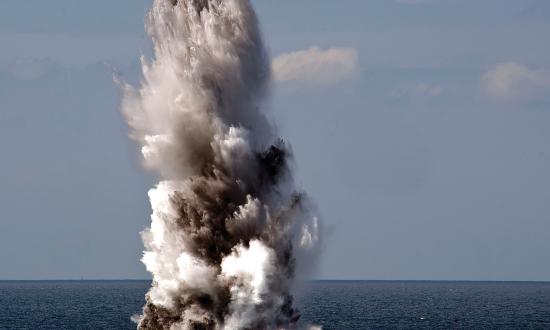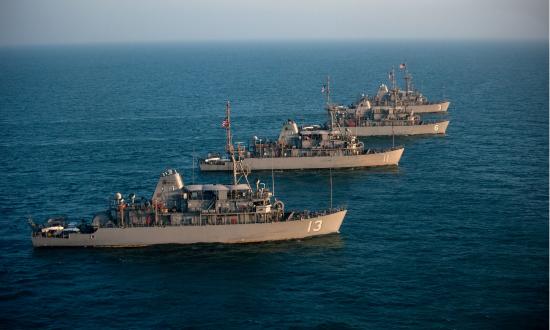Mine warfare at sea is an endless battle of wits . . . It is never static. He introduces a new mechanism and we have to crack it, because if we don’t crack it the minesweepers cannot sweep it, and if they cannot sweep it the ports are closed and this island starves.
Ivan Southall, Softly Tread the Brave
Across from the quarterdeck of the Naval School, Explosive Ordnance Disposal (EOD), the EOD Memorial bears the names of the 343 military EOD technicians killed in the line of duty since the beginning of the EOD career field. The earliest casualty on the wall is Ensign John M. Howard, killed on 11 June1942, at Corton Sands, England.1 On that day, Ensign Howard and the British officer he was assisting did not know the T-type, “Tommy,” mine variant they faced had been altered with a booby trap to thwart recovery and exploitation. What they did know was that German magnetic mines were extremely dangerous to handle and recovering them intact was crucial to the war effort.2
Early in World War II, mines that functioned when they sensed the magnetic field of a passing ship were an anticipated but still new development and could not be swept mechanically. For an island nation whose survival rested on the food and war matériel shipped by sea, the implications of sea mines were dire. If merchant ships could not land their goods in English ports, England would starve and the war would be lost. Disarming these mines so British scientists could unlock their secrets and develop vital countermeasures—such as degaussing and the “Double-ell” magnetic sweep—was essential to Britain’s survival.3 As the war continued, mine disposal personnel taking heroic risks were able to render safe T-type mines and a long succession of other magnetic and acoustic sea mines so the science-and-technology establishment could study them and work out how to defeat them.
Fast forward to March 2022. Ukrainian and Turkish Navy forces report the neutralization of drifting sea mines of the “R-421-75” type, which had been under custody of Ukraine in Sevastopol until Crimea was seized by Russia in 2014. Drifting mines violate international law, and while the mines currently reported are older and relatively simple, it is not implausible that friendly forces might encounter variants in the future that have been modified or booby trapped. An inability to clear such mines would imperil commercial shipping and encourage their further use.
The ability to exploit enemy mines for intelligence—especially unknown mines—remains as critical today as it was in World War II. Although not an island nation like Great Britain, the United States is a maritime nation, and 90 percent of global trade by weight and volume travels by sea. Mine countermeasures (MCM) clearly have strategic, operational, and tactical implications—from keeping sea lanes open, countering an adversary’s ability to shape the battlespace, and enabling dominant maneuver. Unfortunately, the U.S. Navy’s exploitation capacity—on which the Navy’s ability to avoid, sweep, and clear mines depends—is insufficient to the meet the strategic needs of the nation or the operational and tactical requirements of the Navy and Marine Corps, especially in a contested environment against a peer competitor.
Critical Intelligence
Exploiting mines that have been neutralized and recovered is essential to characterizing the threat they pose, developing effective mine hunting and clearance techniques, designing effective countermeasures and tactics for the Fleet, and developing EOD render safe procedures. In competition below the level of armed conflict, attributing mining events is essential to holding the responsible actor accountable. The technical exploitation of mines—as well as other types of ordnance, sensors, ship and aircraft systems, and other materiel—answers critical information requirements for strategic, operational, and tactical decision makers in peacetime, competition, and armed conflict.
Today’s adversaries—including China, which produces some of the world’s most advanced and lethal mines—have added many new mines and other naval munitions to their conventional arsenals, which remain unknown . This gap in knowledge makes clearing enemy sea mines a slow, high-risk exercise in discovery learning. Unmanned systems able to deliver ordnance, function as mines, or serve as sensors will compound this problem. As the EOD force refocuses on conventional ordnance in the context of strategic competition and major combat operations, increased technical exploitation capability and capacity are critical to closing the knowledge gap.
Peer competitors are not the only nations able to field sophisticated mines. In the First Gulf War, Iraq employed the multiple-influence, Italian Manta mine whose novel shape and glass-reinforced plastic case created a difficult mine-hunting problem. Neither Italy nor Iraq were great powers. The U.S. Navy does not need a robust expeditionary MCM capability because of great power competition. Instead, it needs it because mines are an enduring naval problem, and any adversary can afford them. The ability to recover mines and exploit them for tactical, operational, and strategic intelligence is essential to an effective MCM capability.
In competition below the level of armed conflict, exploitation is critical to attributing malign behavior to reinforce diplomacy or set the conditions for potential combat operations. Failing to attribute attacks limits our understanding of complex events, delays our response, costs us opportunities for decisive action, and yields the initiative to our adversaries. Since World War II, about half of all mining incidents have been unattributed, allowing the perpetrators plausible deniability.5 Mining of the Corfu Channel in 1946, probably by Albania, and the Mines of August crisis in 1984 in the Red Sea, for which Libya was likely responsible, were never definitively attributed, preventing subsequent military or diplomatic action.6 Exploitation can also distinguish between accidents and incidents. The 1889 sinking of the USS Maine (ACR-1) in Havana Harbor, attributed erroneously to a mine, fanned public sentiment for war with Spain. The quicker and more conclusive the attribution, the better for decision making.
Expanding Mine Exploitation Capabilities
Doctrinally, EOD MCM platoons exploit the mines they neutralize and recover. Historically, exploitation would allow them to determine things like ship counter and sensitivity settings, especially for a known mine for which established render-safe procedures existed. The advent of modern sea mines that incorporate multiple sensors, solid state circuitry, computer processors, and other complex electronic components requires augmentation by other experts—notably Expeditionary Exploitation Unit One (EXU-1). EXU-1 provides industrial radiography, 3D scanning, spectroscopy and chromatography, and advanced disassembly techniques to field and exploit recovered mines, make them safe to ship, and expedite their transfer to the Navy’s science and technology (S&T) establishment for further analysis in coordination with the intelligence community (IC). To close the Navy’s gap in mine exploitation capability and capacity, it should improve the exploitation capabilities of the EOD MCM platoons with advanced training and equipment, expand the capacity of EXU-1 to support multiple expeditionary requirements, and further integrate operational exploitation forces with the S&T community.
The Navy’s expeditionary exploitation capability is insufficient to support expeditionary MCM requirements at any scale. While the number of Navy’s Expeditionary MCM companies is probably too few, the Navy has only a single EXU-1. MCM requirements must compete with other exploitation requirements, which, depending on the nature of the contingency, could include exploiting other advanced ground and air munitions, improvised explosive devices, and sensors. There simply is not enough capacity to support multiple requirements in a major contingency.
EXU-1’s platoons are organized, trained, and equipped to establish expeditionary technical and forensic exploitation laboratories. These provide an in-theater exploitation capability that links the collection capacity that ExMCM and EOD units provide with the extensive exploitation capabilities of the Navy’s systems commands, other national labs, and service intelligence centers. Expanding this modest in-theater exploitation capability and integrating it with the S&T establishment and IC would provide the Navy a means to exploit captured mines in theater and expedite their transfer to experts in the United States for comprehensive analysis.
Joint doctrine considers recovery and exploitation part of the “defensive-active” branch of the mine-warfare family tree, but exploitation can also contribute to “offensive MCM by strike forces.”7 Operations against enemy minelayers or mine manufacturing, handling, and storage facilities can yield pristine mines ideal for exploitation, along with technical documents and enemy mine technicians that can be debriefed for intelligence. The World War II Bruneval raid is perhaps the benchmark example of direct action to obtain technical intelligence. On 27 February 1942, British paratroopers dropped into occupied France, captured a German coastal radar installation, dismantled its mysterious radar, and evacuated key components and a captured technician by sea to England for exploitation. Analysis of the Würzburg radar led to the development of countermeasures—the employment of chaff—and improvements to British radar. Raids against mine facilities could yield similar dividends.
During World War II, the British formed a commando unit—30 Assault Unit—made up of Royal Navy technical specialists and Royal Marine Commandos specifically to capture Axis war matériel that could further the Allied war effort.8 Early in the war, 30AU concentrated on capturing encryption machines, codebooks, and sensitive documents during raids and operations, racing ahead of advancing units to secure matériel before the enemy could destroy it. After the Normandy invasion, however, 30AU went on to seize Torpedo Arsenal West in Houilles, France, with its trove of experimental mines and torpedoes, the entire German naval archive at Tambach Castle, Bavaria, and the Waltherwerke submarine plant in Kiel.9 Exploitation forces should train with special operations and Marine units for this mission. Surveillance of known mine facilities should be an intelligence priority.10
Exploitation is not always planned; sometimes we just get lucky. Cold War defectors delivered their MiG aircraft to U.S. allies, and flotsam regularly washes up on friendly shores. In fact, the mine that killed Ensign Howard had broken its moor and was pushed toward shore by strong seas—fortuitous since the hard-hat diving techniques available then were too clumsy for mine clearance. In another incident, Royal Navy mine disposal personnel rendered safe a German magnetic mine only to find it had been sabotaged at the factory; painted inside its case was a Star of David and the words “we are with you.”11 Recently, Indonesian fisherman have reported snagging Chinese undersea drones in their nets. Fortune, however, favors those who create their own luck. A healthy expeditionary MCM capability augmented with a scalable in-theater mine exploitation capability that can expedite the transfer of captured mines to the S&T establishment is an achievable means to capitalize on fleeting exploitation opportunities.
Looking Forward
Today’s Navy EOD operators are much better trained and equipped than their forebears to confront unknown munitions, but it is still a daunting prospect. Mine exploitation remains a difficult technical and operational challenge and our capacity to meet it is inadequate. Robust capabilities to field-exploit enemy sea mines underpin the Navy’s ability to counter mines that impede dominant maneuver and the Navy’s ability to attribute mining to the responsible actor. Closing this capability gap requires further investment in the Navy’s EOD MCM forces, its expeditionary exploitation capabilities, and the Navy’s S&T establishment.
1. Ensign Howard graduated from the Navy’s Mine Disposal School, class #3, in January 1942, and was one of a handful of American naval officers sent to England to learn mine disposal techniques. Even before the U.S. entry into the war, other Navy and Army officers similarly studied mine and bomb disposal under their British mentors. These pioneers established mine and bomb disposal schools in the United States.
2. F. Ashe Lincoln, Secret Naval Investigator: The Battle against Hitler’s Secret Underwater Weapons (Yorkshire: Frontline Books, 2017), 75.
3. Lincoln, Secret Naval Investigator, 6.
5. Chris O’Flaherty, Naval Minewarfare: Politics to Practicalities (United Kingdom: The Choir Press, 2019), 254, Annex C.
6. O’Flaherty, Naval Minewarfare, 255.
7. Joint Publication (JP) 3-15, Barriers, Obstacles, and Mine Warfare for Joint Operations (Washington, DC: The Joint Staff, 5 March 2018), figure IV-2 and IV-5.
8. Nicholas Rankin, Ian Fleming’s Commandos: The Story of 30 Assault Unit in WWII, (London: Faber and Faber Limited, 2011), 127.
9. Rankin, Ian Fleming’s Commandos, 266–67, 289–90, 305. The naval archive contained “the complete operational logs, war diaries, technical reports and administrative minutes of all German navy business from 1870 to date.”
10. Joint Publication (JP) 3-15, IV-6. 11., Secret Naval Investigator, 122.






